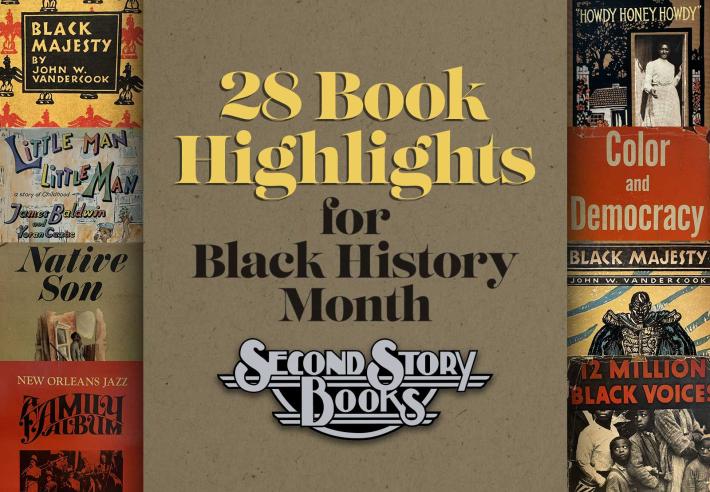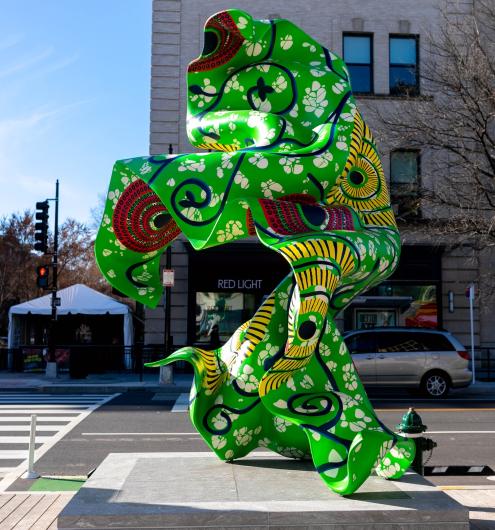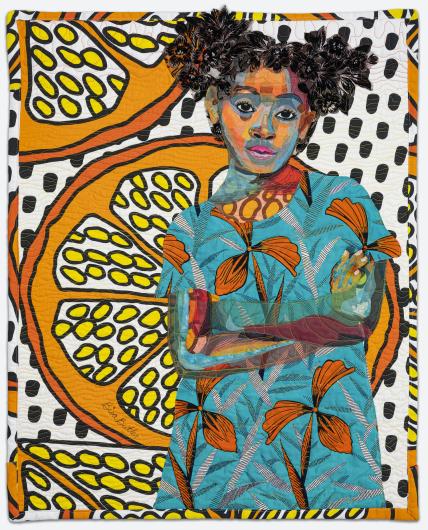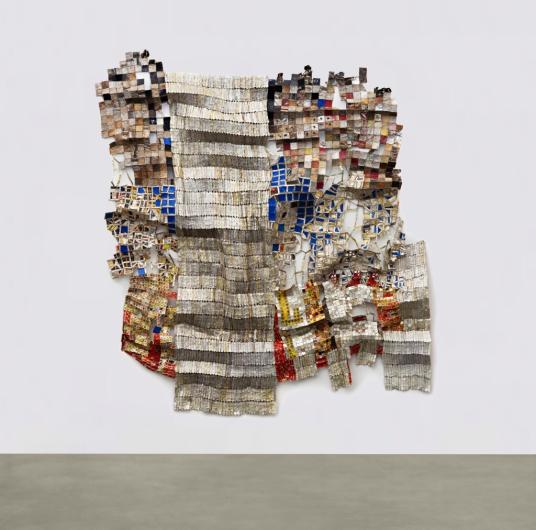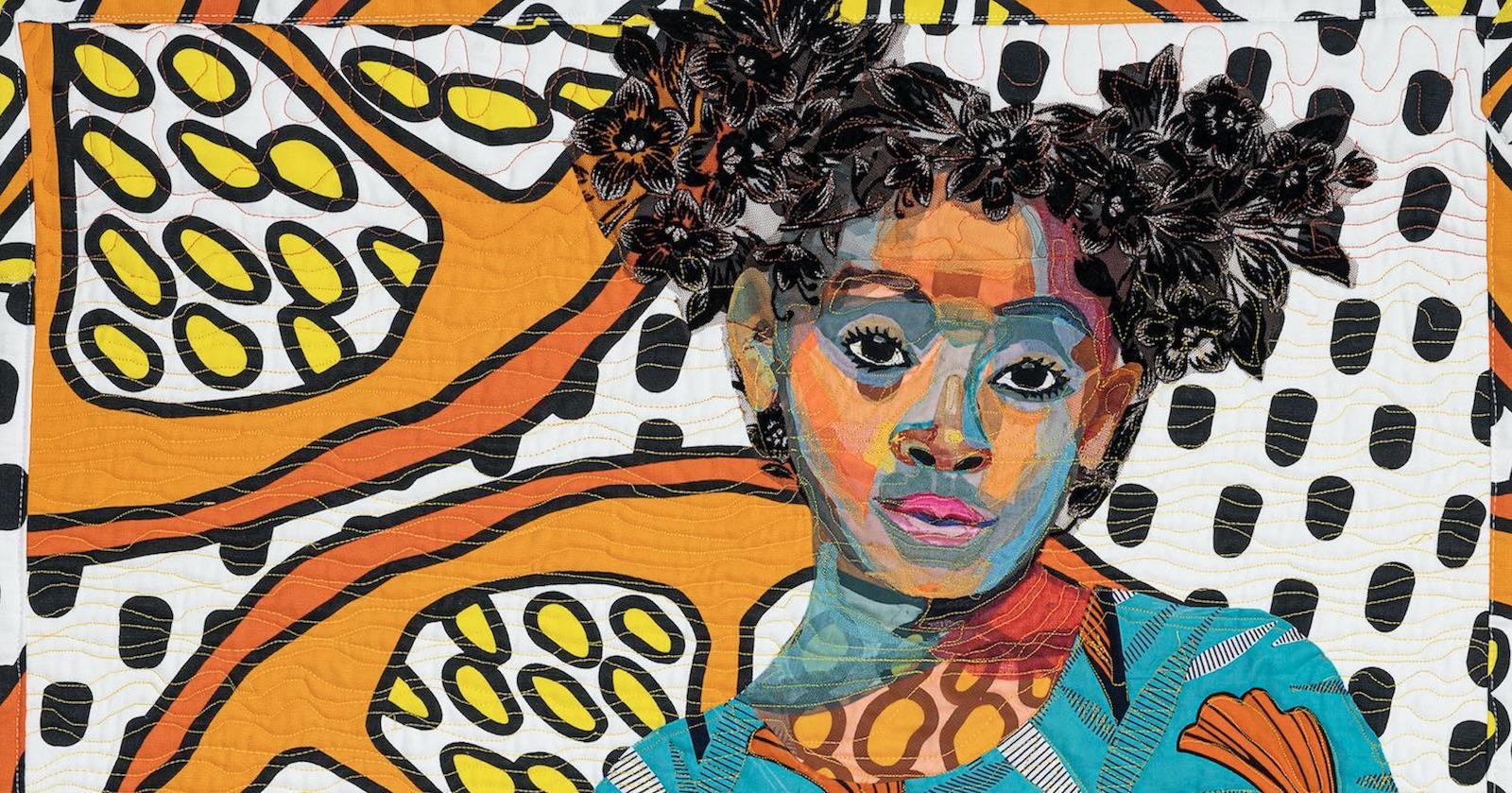
Throughout history, countless ethnic groups and marginalized people have not been given the attention they deserve from the art world. This slideshow is dedicated to black, contemporary artists that we believe our readers should know more about. Many of these artists' works both acknowledge the art world's exclusionary history and subvert it. The artworks highlighted here span drawing, painting, quilting, and sculptural practice.
Additionally, links are provided to connect readers to more information about these artists and their work.
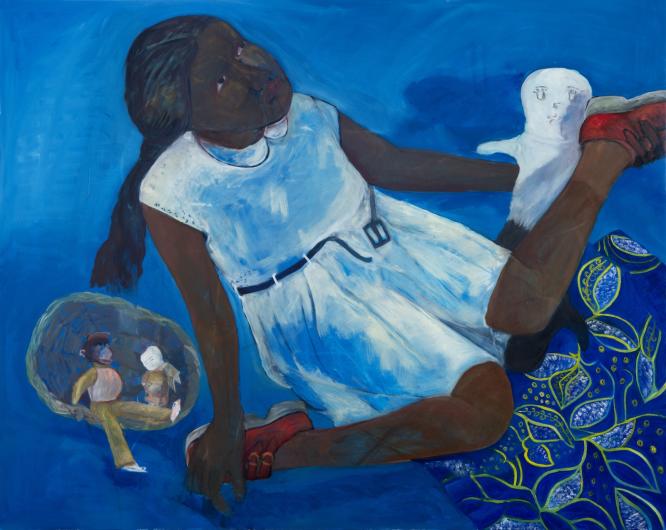
Philemona Williamson, Red Buckled Shoes, 2014. Oil on linen. 48 x 60 inches.
Philemona Williamson’s paintings often read as childhood or adolescent memories captured with vibrant oils on linen. The artist is not afraid to operate outside of the art critic’s desire for work that is easy to interpret or easily categorized as ‘black artwork.' Despite exhibiting with big-name contemporaries including Kerry James Marshall, Kara Walker, and Whitfield Lovell, her work is not as well-known as it should be.
Uniquely referential, her work is tied to a personal visual language that features items such as clothing and toys that are either from or reminiscent of the artist's own childhood. With upcoming solo exhibitions in San Francisco and NYC, Williamson continues to make work from her home in East Orange and studio in Upper Montclair, New Jersey.

Carrie Mae Weems, RESIST COVID TAKE 6!, 2020.
Carrie Mae Weems is best known for her video and photography work which most frequently explores the topics of sex, identity, and race. Her most well-known project, The Kitchen Table series, was completed in the early 90s. The artist—who has repeatedly communicated her passion for the representation of black individuals, women especially—positioned herself as the central figure in this project.
Through her work, she has created space for artists like herself to operate in but she has also been outspoken about the need for more than space, advocating for dialogue and transparency. Most recently, Weems created the public art campaign RESIST COVID/ TAKE 6! In order to spread awareness and information about COVID-19 and its particular impact on BIPOC communities.
28 Highlights for Black History Month 2023
Yinka Shonibare, Material (SG) I, 2019. Painted fiberglass and stainless steel. Installation View at Whitman Walker Health in Washington DC.
Yinka Shonibare made a name for himself with his sculptural twists on iconic paintings and staples of art history. Born in London, the artist spent his childhood between England and Nigeria. This blend of contrasting cultural experiences and histories manifests itself in his artwork.
Most of his artwork features in what is now widely regarded as traditional African cloth but like the artist himself has a more complicated history. The dyeing technique, batik, is originally Indonesian but was adopted by Dutch traders during colonization. Eventually, the Dutch brought this practice to West Africa. The artist is set to receive a prestigious Art Icon Award on March 22.
Keith Knight, Excerpt from Don’t Hate the Playas . . . Hate the Games!!, 2018.
Cartoonist Keith Knight is the artist behind several award-winning comic strips including The Knight Life, (th)ink, and the K Chronicles. Most recently, Knight is cowriting a Hulu series entitled Woke.
Loosely based on his own life, the show’s inciting incident sees a black comic artist by the name of one of Knight’s pseudonyms, Keef, mistaken for a wanted man and violently attacked by police. This all happens while the artist is hanging up fliers for his work in a San Francisco park. The show, which is been renewed for a second season and is up for an NAACP award this March, goes on to explore issues of racial illiteracy and activism.
Kara Walker, Barack Obama as Othello "The Moor" With the Severed Head of Iago in a New and Revised Ending by Kara E. Walker, 2019. Pastel, Conté crayon, charcoal on treated paper. 87.375 x 72 inches.
Originally made famous by her iconic cut-paper silhouettes, Kara Walker continues to innovate and draw the eye with her artwork. Her unwavering willingness to explore violence and unsettling subjects has resulted in artwork that shines a needed light on the atrocities of America's past and present. Walker's next project is a solo exhibition at the Kunstmuseum Basel opening in June 2021. Focused on her drawing practice, the exhibition will feature over 600 works on paper primarily from her personal archive but also including recent work such as this portrait of Barack Obama. The accompanying exhibition catalog is currently available.
Bisa Butler, Anaya with Oranges, 2017. Dimmit Davies Collection.
Though she originally trained as a painter, today Bisa Butler's finished works are exclusively quilted. Unsurprisingly, the techniques she employs to create these artworks are often informed by more traditional tools of the artist. Her application of fabric to create dimension is incredibly painterly, almost like a glaze.
Butler's work also speaks to her familial and artistic legacy. Her mother and grandmother taught her how to sew, she took up the practice in her artistic work while pregnant, and she frequently looks to the trailblazing quilts of Faith Ringgold for inspiration. Most recently, Butler's quilts are on display in Bisa Butler: Portraits at the Art Institute of Chicago.
Amy Sherald, A bucket full of treasures (Papa gave me sunshine to put in my pockets...), 2020. Oil on canvas. 54 x 43 x 2 1/2 in.
Amy Sherald, perhaps most widely known for her portrait of former First Lady Michelle Obama, draws on her keen awareness of art history and literature to paint noble, colorful, and subversive portraits of Black Americans.
Deeply referential, her work is designed with intention to redefine the American identity. With her first solo show on the West Coast opening in March, Sherald’s work is in the midst of an exponential growth in popularity. In a December 2020 auction, the artist broke her personal record sale of $350,000 with a $4,265,000 sale of her double portrait entitled The Bathers.
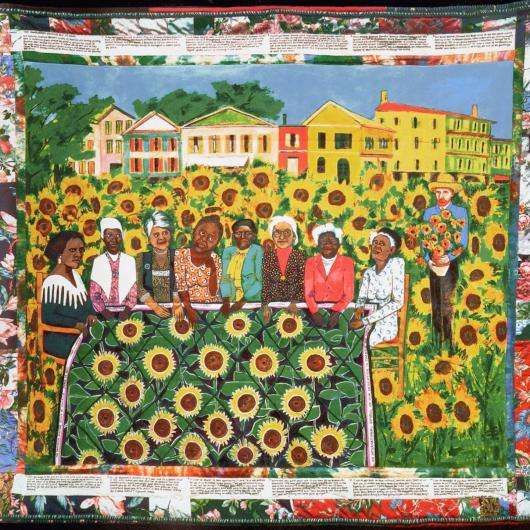
Faith Ringgold, Sunflower Quilting Bee at Arles, 1991. Acrylic on canvas with pieced fabric border.
Multimedia artist Faith Ringgold has found success as a sculptor, painter, performance artist, and writer. Her story quilts, which blend several of these talents, are particularly remarkable. Her first quilt Who’s Afraid of Aunt Jemima was written in 1983.
This medium, with its frame of written words, was taken up by Ringgold because it allowed her to publish writing without a filter and, remarkably, it remains unique to the artist. Born in Harlem in 1930, Ringgold's career is storied and filled with variety.

Kehinde Wiley, Rumors of War, 2019.
Kehinde Wiley has become incredibly recognizable over the last few years as the artist behind the iconic Barack Obama portrait. An artist with a masterful understanding of heroic, grand portraiture, Wiley’s artwork most often utilizes storied codes and systems to depict urban, black and brown men.
These artworks operate on juxtaposition and commodification to generate deeper, important conversations about privilege and history. Often, the artist strives to relate the individuals depicted to the history of their surroundings. This statue is a prime example. Entitled Rumors of War, it is a sculptural response to Richmond’s Monument Avenue which is lined with confederate statues.
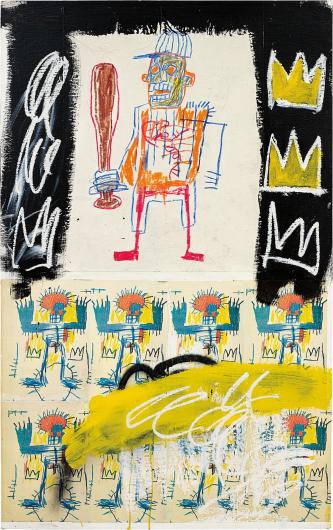
Jean-Michel Basquiat, Untitled, 1981. Acrylic, oilstick, and xerox on wood. 48 x 30 in.
Jean-Michel Basquiat passed away in 1988 at only 27 years of age. Despite his short life, the artist had a huge impact on contemporary art and popular culture. First recognized in the late 1970s for his street art working as a duo under the name SAMO, Basquiat quickly made his way into more elusive circles. At age 22 he became the youngest artist to exhibit at the Whitney Biennial in New York.
Around this time, he began to incorporate crowns into his work, often atop the heads of black and brown men. Today, Basquiat’s crowns remain a staple of pop culture with a preeminence that rivals Dürer’s Praying Hands or Fairey’s Obey Giant.
El Anatsui, Wade in the Water, 2017-2021. Aluminum bottle caps and copper wire. 98 x 89 x 7 inches (249 x 226 x 17.8 cm).
The Ghanaian sculptor El Anatsui and his work have become highly recognizable over the decades as his art has traveled the world. The artist is known primarily for his metallic tapestries, which are composed of recycled materials and created with the help of a team of assistants. The artwork featured above—which is set to be auctioned at Sotheby's in early 2022—is a prime example. These tapestries purposefully subvert conventional notions of what constitutes a sculpture, while blending African and European methods of abstraction from art history.
Anatsui, having experienced such artistic success, has long integrated his artistic output with nonprofit work. The money raised in the aforementioned Sotheby’s auction, for example, will go towards Philadelphia’s Brandywine Workshop and its endowment campaign as well as towards the creation of the El Anatsui Fellowships, which will annually fund a pair of residences for African Artists.
Anna Claire Mauney
Anna Claire Mauney is the former managing editor for Art & Object. A writer and artist living in North Carolina, she is interested in illustration, the 18th-century, and viceregal South America. She is also the co-host of An Obsessive Nature, a podcast about writing and pop culture.![]()




